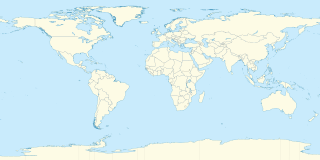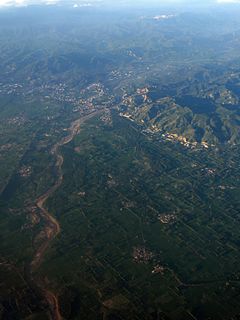 W
WThe Sarasvati River is one of the rivers mentioned in the Rig Veda and later Vedic and post-Vedic texts. It plays an important role in the Vedic religion, appearing in all but the fourth book of the Rigveda.
 W
WAdi Badri, also Sri Sarasvati Udgam Tirath, is a tourist site of archaeological, religious and ecological signifiance in a forest area in the foothills of the Sivalik Hills in Bhabar area, situated in northern part of Yamunanagar district, of the north Indian state of Haryana. There are remains of many Buddhist stupas and monasteries, which are about 1500–2000 years old, and there is also a group of Hindu temples from the 9th century. Based on the multiple archaeological excavations undertaken here, archaeologists have sent the proposal to Archaeological Survey of India (ASI) to include this site in the list of protected heritage site. Several popular annual festivals are held here, including the five day long National Saraswati Festival in January, Adi Badri Akha Teej Mela in Vaisakh around April-May, week-long Adi Badri-Kapal Mochan Kartik Purnima religious mela around November.
 W
WBanawali is an archaeological site belonging to Indus Valley Civilization period in Fatehabad district, Haryana, India and is located about 120 km northeast of Kalibangan and 16 km from Fatehabad. Banawali, which is earlier called Vanavali, is on the left banks of dried up Sarasvati River. Comparing to Kalibangan, which was a town established in lower middle valley of dried up Sarasvathi River, Banawali was built over upper middle valley of Sarasvathi River.
 W
WBhagwanpura, also known as Baghpur, is a village in Thanesar sub-district of Kurukshetra district, Haryana, India. It is an archaeological site that lies on the bank of Hakra Ghaggar channel. Situated 24 km northeast of Kurukshetra, the site is notable for showing an overlap between the late Harappan and Painted Grey Ware cultures. Painted Grey Ware is generally associated with the Vedic people, so this area can be said as the junction of two great civilizations of India.
 W
WThe Chautang, originating in Siwalik Hills, is a tributary of Sarsuti river which in turn is tributary of Ghaggar river in of Haryana state of India.
 W
WThe Tangri River, also called the Dangri River, which originates in the Shivalik Hills, is a tributary of the Ghaggar River in the Haryana state of India.
 W
WThe Ghaggar-Hakra River is an intermittent river in India and Pakistan that flows only during the monsoon season. The river is known as Ghaggar before the Ottu barrage and as the Hakra downstream of the barrage. The Hakra river is hydraulically connected to the Nara River provided it has adequate flow to maintain surface flow. After the construction of the Otu Barrage, the downstream Hakra river dried up fully but subsurface flow is maintained to the Nara river which becomes later the delta channel of the Indus River before joining the sea via Kori Creek in Gujarat state.
 W
WThe Kaushalya river, a tributary of Ghaggar river, is a river in Panchkula district of Haryana state of India.
 W
WThe Markanda river in Himachal Pradesh and Haryana states of India is a tributary of Ghaggar river, flowing through Sirmaur District, Ambala district and Shahabad Markanda town in Kurukshetra district. The Markanda river's ancient name was Aruna.
 W
WThe Helmand River (also spelled Helmend, or Helmund, Hirmand is the longest river in Afghanistan and the primary watershed for the endorheic Sistan Basin.
 W
WThe Indus River is one of the main rivers of the Indo-Gangetic Plain in the Indian subcontinent. It flows through China, India, and Pakistan. Originating in the Tibetan Plateau in the vicinity of Lake Manasarovar, the river runs a course through the Ladakh region of India towards Gilgit-Baltistan, and then flows in a southerly direction along the entire length of Pakistan to merge into the Arabian Sea near the port city of Karachi in Sindh. The Indus is the longest river of Pakistan.
 W
WKapal Mochan is an ancient place of pilgrimage for both Hindus and Sikhs, 17 km north-east of Jagadhari town, on the Bilaspur road in Yamunanagar district. It is also called Gopal Mochan and Somsar Mochan. As per Legend, Brāhmanahatya i.e. killing of Brahmin is considered as a major sin, but one who kills a Brahmin and bath here, his Brāhmanahatya sins will be washed. Nearby Bilaspur, Haryana in Yamuna Nagar District which takes its name from the corrupted form of "Vyas Puri", was the ashram of Ved Vyasa rishi where he wrote the Mahabharta on the banks of Sarasvati river near Adi Badri where Sarasvati river leaves Himalayas and enters the plains.
 W
WKaroh Peak is a 1,467-metre (4,813 ft) tall mountain peak in the Sivalik Hills range of greater Himalayas range located near Morni Hills area of Panchkula district, Haryana, India. It is highest point in the state of Haryana
 W
WMorni is a village and tourist attraction in the Morni Hills at the height of 1,267 metres (4,157 ft) in the Panchkula district of the Indian state of Haryana. It is located around 45 kilometres (28 mi) from Chandigarh, 35 kilometres (22 mi) from Panchkula city and is known for its Himalayan views, flora, and lakes. The name of Morni is believed to derive from a queen who once ruled the area two thousand years back. She was a just and noble ruler of her Queendom and after her the Morni was occupied by the Raja of Morni,kotaha and Pindrawal Raja Mir Syed Muhammad Baquar Ali Khan C.I.E. and he was succeeded by his son Raja Mir Syed Muhammad Jafar Ali Khan II and then he was succeeded by his son Raja Mir Syed Muhammad Akbar Ali Khan II O.B.E and he was succeeded by his three sons Raja Mir Syed Muhammad Kasim Ali Khan III, Raja Mir Syed Muhammad Kazim Ali Khan I and Raja Mir Syed Muhammad Raza Ali Khan I
 W
WSarasvati Pushkaram is a festival of River Sarasvati normally occurs once in 12 years. Saraswati River is considered as the 'Antarvahini' which flows at Triveni Sangam. This Pushkaram is observed for a period of 12 days from the time of entry of Jupiter into Mithuna rasi (Gemini).
 W
WThe Sarsuti river, originating in Siwalik Hills and flowing through the palaeochannel of Yamuna, is a tributary of Ghaggar river in of Haryana state of India. Its course is dotted with archaeological and religious sites dating back to post-Harrapan Mahabharata sites from Vedic period, such as Kapal Mochan, Kurukshetra, Thanesar, Brahma Sarovar, Jyotisar, Bhor Saidan and Pehowa.
 W
WKhadg Singh (KS) Valdiya was an Indian geologist and a former vice chancellor of Kumaon University, known for his contributions in the field of geodynamics. A 2007 recipient of Padma Shri, he was honoured again by the Government of India in 2015 with Padma Bhushan, the third highest Indian civilian award.
 W
WThe Yamuna is the second-largest tributary river of the Ganga and the longest tributary in India. Originating from the Yamunotri Glacier at a height of 6,387 metres (20,955 ft) on the southwestern slopes of Banderpooch peaks of the Lower Himalaya in Uttarakhand, it travels a total length of 1,376 kilometres (855 mi) and has a drainage system of 366,223 square kilometres (141,399 sq mi), 40.2% of the entire Ganga Basin. It merges with the Ganga at Triveni Sangam, Prayagraj, which is a site of the Kumbh Mela, a Hindu festival held every 12 years.